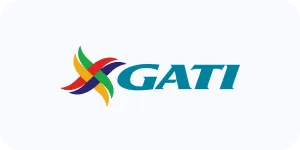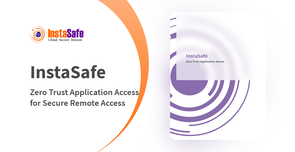Enable Secure DevOps Security, the Zero Trust Way
Enable secure collaboration amongst your DevOps team without forcing them to change how they work
Secure your DevOps applications and connections with InstaSafe

SSH Connections
InstaSafe ZTAA secures your SSH servers by securing any attempt to access resources from command lines with credential based authentication and authorisation. Any access request is validated against configured access policies before being granted

Web and SaaS Applications
You can use Instasafe ZTAA to access your internal web based and SaaS applications like Jira, Wordpress, Jenkins, Gitlab. For every access request, InstaSafe assesses the identity of user and device and context of request before granting least privilege access

RDPs
Since Remote Desktops allow users to connect to a machine from a different machine, they are important for DevOps teams. InstaSafe ZTAA allows RDP access with additional layers of authentication through its inbuilt SSO and MFA capabilities
DevSecOps teams pipelines are dynamic and need to carry on their task uninterrupted, but at the same time there's a need to protect the increasing endpoints
To ensure compliance, it is imperative that DevOps pipelines are secured effectively. This requires addressing security concerns as an integral part of the Software Development Life Cycle (SDLC), from the early stages of design and development to the final stages of testing and deployment. By integrating security into the SDLC, organizations can identify and address potential security issues earlier in the development process, reducing the risk of data breaches and non-compliance. Ultimately, this approach helps businesses meet the necessary data privacy compliance requirements while also enhancing the overall security and reliability of their DevOps pipelines.
Find out how InstaSafe Zero Trust Application Access ensures complete visibility across your network
Access in Secure Environments
Multifactor Authentication
A more Secure VPN Alternative
Privacy First
Monitor and Log Privileged Activity
Access in Secure Environments
Enable secure connections from developers to authorised applications like Gitlab, while making them invisible to the external internet with DevOps application security. Create application specifc tunnels based on Zero Trust principles to create a secure containerised environment for developers to work in
Access in Secure Environments
Access in Secure Environments
Enable secure connections from developers to authorised applications like Gitlab, while making them invisible to the external internet with DevOps application security. Create application specifc tunnels based on Zero Trust principles to create a secure containerised environment for developers to work in
Multifactor Authentication
Access in Secure Environments
Enable secure connections from developers to authorised applications like Gitlab, while making them invisible to the external internet with DevOps application security. Create application specifc tunnels based on Zero Trust principles to create a secure containerised environment for developers to work in
A more Secure VPN Alternative
Access in Secure Environments
Enable secure connections from developers to authorised applications like Gitlab, while making them invisible to the external internet with DevOps application security. Create application specifc tunnels based on Zero Trust principles to create a secure containerised environment for developers to work in
Privacy First
Access in Secure Environments
Enable secure connections from developers to authorised applications like Gitlab, while making them invisible to the external internet with DevOps application security. Create application specifc tunnels based on Zero Trust principles to create a secure containerised environment for developers to work in
Monitor and Log Privileged Activity
Access in Secure Environments
Enable secure connections from developers to authorised applications like Gitlab, while making them invisible to the external internet with DevOps application security. Create application specifc tunnels based on Zero Trust principles to create a secure containerised environment for developers to work in
InstaSafe makes it Easy and Secure. Get started on your Secure DevOps Access journey today.
Benefits of DevOps Security with Zero Trust Access

Secured Development Environment
Zero Trust access ensure right users accessing right applications without providing access to entire networks. It eliminates lateral attack movement of attackers.

Integrated security into DevOps
Getting security tightly integrated through all phase of Software Development Life Cycle (SDLC) without worrying about security and compliance issues.

Better visibility
Detailed reporting about user activity. A better overview of role based access policies, group creation, and password modification.
Our Customers Say on 





Hariharan S
Vice President
"Good to use, easy to manage Zero Trust VPN security tool for cloud and ERP applications"
InstaSafe has been instrumental in supporting the Information Management strategy of my organization by providing a secure foundation for our hybrid network infrastructure. We have managed to easily extend always-on connectivity and secure access to our cloud and ERP applications with Instasafe Zero Trust Access. It is much faster than a VPN and much easier to manage.

Our Security Solutions are
Trusted by 150+ businesses of all industries and sizes











Frequently Asked Questions on DevOps Security
DevOps security is the practice of integrating security measures into the DevOps process to ensure that software development and deployment is done in a secure and compliant manner.
- Security
- Seamless access
- All applications over a single dashboard, respective where they are hosted
- Controlled (no copy/paste/record/screen share) access
- User Device approvals
- No user who needs to access has visibility into the application.
- Secure VPN replacement
- Having a controlled access to each of the Devops applications.
- Hidding Applications from internet.
- Seamless one access to all applications.


